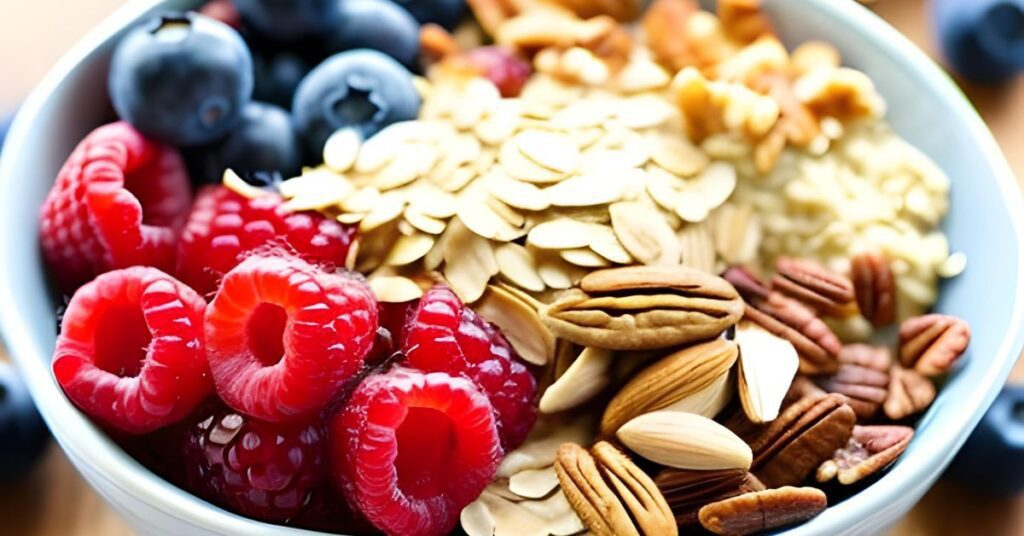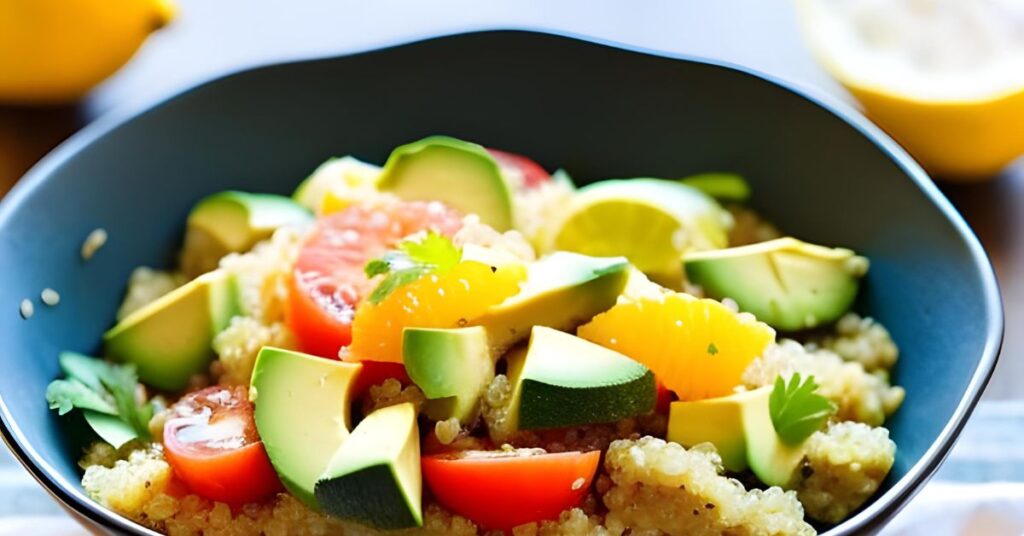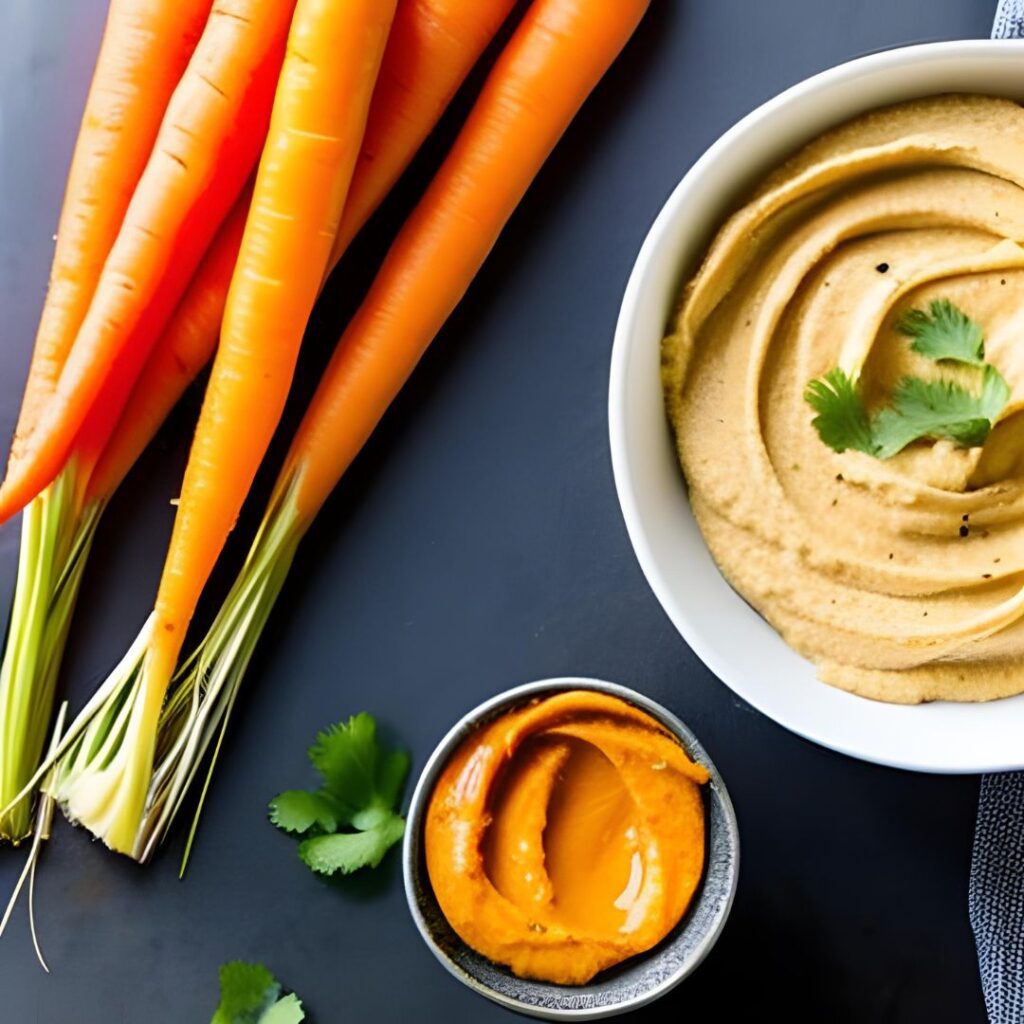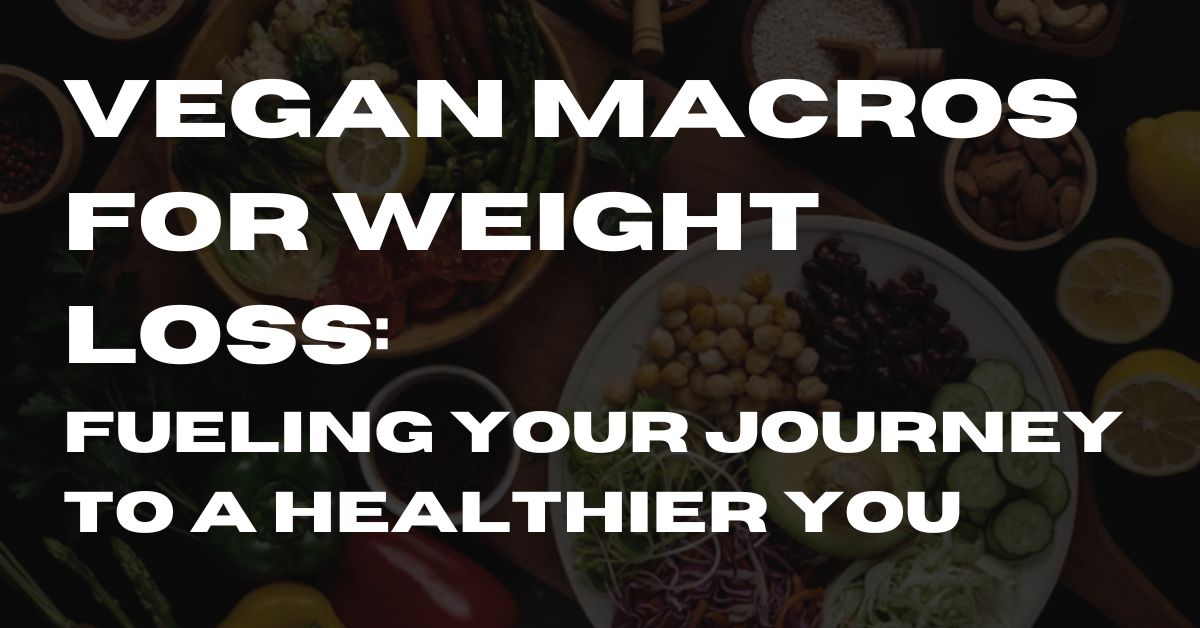Are you prepared to embark on a journey toward a healthier and leaner you, all while staying committed to your vegan principles?
If you’ve ever pondered how to harness the potential of plant-based nutrition for effective weight management, you’re not alone.
Many of us are on a mission to shed those unwanted pounds, but as adherents of the vegan lifestyle, we encounter both unique challenges and opportunities.
In this guide, we’ll unveil the secrets of ‘Optimizing Vegan Macros for Weight Management,’ demystifying the art of balancing carbohydrates, proteins, and fats while savoring every delectable morsel of your plant-powered meals.
Prepare to uncover a sustainable and enjoyable path toward your weight management objectives – no deprivation necessary.
Table of Contents
Understanding Macronutrients for Effective Weight Management
In our pursuit of sustainable and effective weight management, we frequently hear about the significance of harmonizing macronutrients.
But what precisely are macronutrients, and how do they play a pivotal role in achieving our weight management goals?
Let’s delve into this nutritional labyrinth, dissect it, and fathom why attaining the appropriate equilibrium of carbohydrates, proteins, and fats is the linchpin of your weight management journey.
Carbohydrates: These are frequently cast as the “culprits” in the realm of dietary choices, yet research unfolds a more nuanced narrative.
A study featured in the New England Journal of Medicine underscores the importance of selecting complex carbohydrates such as whole grains, fruits, and vegetables.
These bestow a consistent release of energy, ensuring a prolonged sensation of fullness and contentment.
It’s not about eschewing carbohydrates but making judicious selections.
Proteins: Beyond their muscle-building role, proteins can be your steadfast allies in the pursuit of weight management.
A research article published in the American Journal of Clinical Nutrition accentuates that diets rich in protein can augment the perception of satiety, ultimately diminishing overall calorie intake.
So, when you contemplate plant-based protein sources like lentils, legumes, and tofu, envision ‘satisfaction.’
Fats: The term ‘fats’ may carry an intimidating connotation, but scientific findings suggest otherwise.
Investigations in the Journal of Nutrition signify that consuming wholesome fats derived from sources such as avocados, nuts, and seeds can cultivate a sense of contentment, curbing mindless snacking tendencies.
It’s all about making prudent fat choices to fortify your weight management expedition.
The Vegan Diet and Weight Management
You might be wondering how precisely a vegan diet can serve as your pathway to successful weight management.
Well, let’s plunge right into it, substantiated by robust research and real-life testimonials.
To begin, the vegan diet revolves around plant-based fare – encompassing vegetables, fruits, legumes, nuts, and seeds.
It inherently shuns saturated fats and cholesterol by omitting animal-derived products.
This alone can work wonders for your weight.
A study spotlighted in the Nutrition discovered that individuals adhering to a vegan diet typically boast lower body mass indexes (BMIs) in comparison to their non-vegan counterparts.
It’s not rocket science; fewer unhealthy fats often translate to fewer undesirable pounds.
Nevertheless, it’s not solely about exclusion; it’s about inclusion as well.
Plant-based foods teem with fiber, which not only imparts a sensation of fullness but also decelerates digestion.
This translates to a reduction in mid-morning snack cravings that can jeopardize your weight management aspirations.
Research featured in the American Journal of Clinical Nutrition underscores the weight-regulating benefits of a high-fiber diet.
Now, let’s delve into the star macronutrients: carbohydrates, proteins, and fats.
Carbohydrates in a vegan diet chiefly emanate from whole grains, vegetables, and fruits.
These intricate carbohydrates deliver sustained vitality, precluding energy fluctuations that lead to binge-eating episodes.
A study disseminated in the British Journal of Nutrition hints that diets rich in whole grains may actively facilitate the reduction of abdominal fat.
Proteins, the foundational building blocks of muscles, are pivotal for preserving lean body mass during the weight loss journey.
Within a vegan diet, you’ll encounter an abundance of plant-based protein sources like beans, tofu, and lentils.
A study outlined in the American Journal of Clinical Nutrition ascertains that heightening protein intake can foster a heightened sense of fullness, thus diminishing the likelihood of overindulgence.
Lastly, fats. Wholesome fats sourced from avocados, nuts, seeds, and olive oil take center stage.
These fats bolster overall well-being and, surprisingly, can contribute to weight management.
The research documented in The Lancet Diabetes & Endocrinology reveals that a diet rich in healthy fats can result in enduring weight loss.
The Perfect Vegan Macro Ratios: Your Blueprint for Triumph
So, you’ve embraced the vegan lifestyle, and you’re prepared to leverage the potency of plant-based nourishment to realize your health and fitness objectives.
But what’s the magic recipe for the finest vegan macro ratios? Let’s get straight to the point and simplify it.
The Optimal Vegan Macro Ratios:
Carbohydrates: 45-65% of Total Calories
Carbohydrates serve as your body’s primary energy source. Stock up on whole grains, fruits, and vegetables to maintain enduring vitality and contentment.
Proteins: 15-25% of Total Calories
Embrace plant-based protein sources like beans, lentils, tofu, and tempeh as your allies. They facilitate muscle development and repair.
Fats: 20-35% of Total Calories
Don’t shy away from fats; simply make discerning choices. Avocados, nuts, seeds, and olive oil supply wholesome fats for overall well-being.
The precise ratio tailored to your needs may fluctuate based on your objectives, level of physical activity, and body type. Nevertheless, as a general guideline, these percentages provide a sturdy foundation for triumph in the realm of vegan macros.
Balancing Vegan Macros for Weight Loss
When it comes to crafting the perfect vegan diet for weight loss, striking the right balance among carbohydrates, proteins, and fats is the ultimate goal. Let’s explore each of these macronutrients, backed by research, to understand how they can be your allies on your weight loss journey.
Carbohydrates: Energize Your Day with the Right Fuel
Carbohydrates are often painted with a broad brush, but not all carbs are created equal.
Research published in the Journal of Nutrition highlights the importance of incorporating complex carbohydrates into your vegan diet.
These include whole grains, fruits, and vegetables.
Why? They release energy slowly, keeping you full and satisfied for longer.
Forget the fear of carbs; embrace the right ones to fuel your day.
Proteins: Plant Power for Weight Loss
Protein isn’t just for bodybuilders; it’s a secret weapon for weight loss too.
A study in the American Journal of Clinical Nutrition found that a higher protein intake can enhance the feeling of fullness, leading to reduced calorie consumption.
Think of plant-based protein sources like lentils, beans, and tofu as your weight loss champions.
They not only help you build muscle but also keep hunger at bay.
Fats: Don’t Shun Them – Choose Wisely
Fats have long been misunderstood as diet saboteurs, but research suggests otherwise.
The European Journal of Nutrition tells us that incorporating healthy fats from sources like avocados, nuts, and seeds can contribute to a sense of satisfaction, curbing those pesky cravings.
It’s all about making mindful choices that support your weight loss goals.
Meal Ideas and Recipes
Are you ready to tantalize your taste buds while shedding those extra pounds?
Let’s explore some mouthwatering vegan meal ideas and recipes for breakfast, lunch, dinner, and snacks that will keep you satisfied and on track with your weight loss goals.
Breakfast: Berry Bliss Oatmeal Bowl

Ingredients:
- 1/2 cup of rolled oats
- 1 cup of unsweetened almond milk
- 1/2 cup of mixed berries (strawberries, blueberries, raspberries)
- 1 tablespoon of almond butter
- 1 teaspoon of chia seeds
- A drizzle of maple syrup (optional)
- A pinch of cinnamon
Instructions:
- In a saucepan, combine rolled oats and almond milk. Cook over medium heat, stirring occasionally, until it thickens (usually 5-7 minutes).
- Transfer the cooked oatmeal to a bowl.
- Top with mixed berries, almond butter, chia seeds, a drizzle of maple syrup (if desired), and a pinch of cinnamon.
- Enjoy your wholesome breakfast!
Lunch: Zesty Quinoa Chickpea Salad with Tangy Lemon-Tahini Drizzle

Ingredients:
- 1 cup of freshly cooked quinoa
- 1 cup of canned chickpeas (drained and rinsed)
- 1 diced cucumber
- 1/2 cup of halved cherry tomatoes
- 1/4 cup of finely chopped red onion
- 2 tablespoons of freshly chopped parsley
- 2 tablespoons of zesty lemon juice
- 2 tablespoons of creamy tahini
- 1 clove of minced garlic
- Salt and pepper, to taste
Instructions:
- In a generously sized bowl, blend the cooked quinoa, chickpeas, diced cucumber, halved cherry tomatoes, finely chopped red onion, and freshly chopped parsley.
- In a separate bowl, whisk up a tantalizing dressing by combining zesty lemon juice, creamy tahini, minced garlic, and a pinch of salt and pepper.
- Drizzle the tantalizing dressing over the salad, and with a flourish, toss until every morsel is enrobed in its tangy embrace.
- Present this invigorating quinoa chickpea salad for a midday repast that’s sure to satisfy.
Dinner: Tofu and Broccoli Dance of Flavors
Ingredients:
- 1 block of firm tofu, cubed
- 2 cups of crisp broccoli florets
- 1 red bell pepper, thinly sliced
- 2 cloves of garlic, finely minced
- 2 tablespoons of low-sodium soy sauce
- 1 tablespoon of fragrant sesame oil
- 1 tablespoon of cornstarch, dissolved in 2 tablespoons of water
- A serving of cooked brown rice
Instructions:
- Heat a roomy pan or wok over medium-high heat, and let a dash of fragrant sesame oil sizzle.
- Add the finely minced garlic and let it sizzle and perfume the air for about 30 seconds.
- Introduce the cubed tofu to the sizzling stage, stirring and sautéing until it takes on a gorgeous golden hue.
- Invite the crisp broccoli florets and thinly sliced red bell pepper to join the tofu in the sizzling soirée, and sauté for another 3-4 minutes.
- In a petite bowl, craft a delectable sauce by whisking together low-sodium soy sauce and the dissolved cornstarch-water mixture.
- Pour this luscious sauce over the tofu and vegetables, stirring continuously until it thickens to perfection.
- Present this tofu and broccoli symphony over a bed of cooked brown rice, and let the flavors serenade your taste buds.
Snack Time: Crispy Carrot Sticks with Creamy Hummus Dip

Ingredients:
- Freshly washed and peeled carrot sticks
- Hummus (store-bought or homemade)
Instructions:
- Tenderly wash and peel the vibrant carrots, then artfully cut them into sticks.
- Serve these crispy carrot sticks with a side of velvety hummus for a delightful and crunchy snack.
Tips for a Successful Journey into Vegan Weight Loss
Embracing a vegan weight loss journey can be a transformative voyage for both your physique and your ethical compass.
It’s a path that not only shows compassion for animals but also nurtures your well-being and the environment.
However, like any weight loss odyssey, it comes with unique challenges and requires a thoughtful approach.
Let’s delve into seven tips that will not only assist you in shedding those excess pounds but also help you flourish on your vegan dietary expedition.
Embrace the Art of Meal Prepping
Meal prepping isn’t just a fad; it’s a game-changing strategy for sustainable vegan weight loss.
By meticulously planning your meals, you ensure a repository of wholesome, well-balanced options at your fingertips.
Batch-cook your favorite plant-based dishes, portion them out, and voilà – you have a week’s worth of nourishing meals ready to thwart any temptations for unhealthy choices when hunger strikes.
Bypass the Siren Call of Juice Diets
Juice diets might promise swift results, but they often lack essential nutrients, leaving you famished and weary.
Instead, prioritize whole foods that provide fiber, protein, and healthy fats.
Opt for invigorating green smoothies featuring vibrant spinach, kale, and a plant-based protein powder for a fulfilling and nutrient-packed breakfast or snack.
Strike a Balance in Your Vegan Diet for Fat Loss and Muscle Building
Preserving your valuable muscle mass is paramount for effective weight loss.
Incorporate high-protein vegan foods like tofu, tempeh, legumes, and seitan into your daily menu.
Protein not only fosters muscle growth but also keeps hunger pangs at bay, reducing the likelihood of overindulging.
Commence Your Day with a Protein-Packed Vegan Breakfast for Weight Management
Breakfast sets the tone for your day.
Kickstart your metabolism and keep cravings in check with a hearty, high-protein vegan breakfast.
Consider tantalizing options such as a tofu scramble adorned with colorful veggies, a protein-rich smoothie bowl, or a comforting bowl of overnight oats crowned with almond butter.
Cultivate a Positive Mindset
Weight loss is more than just the food you consume; it’s about your mindset.
Foster a harmonious relationship with both food and exercise.
Embrace self-compassion, exercise patience with yourself, and celebrate every small triumph along the way.
Refrain from comparing your journey to others – each body is unique, and progress unfolds at its own pace.
Embrace the Art of Variety and Balance
Variety is the spice of life, and it’s a cornerstone of a well-rounded vegan diet.
Embark on an epicurean journey by experimenting with a spectrum of fruits, vegetables, grains, and legumes to keep your meals enthralling and nutrient-rich.
Strive for a cornucopia of colors on your plate, symbolizing a bounty of diverse nutrients.
Balance is the key; ensure every meal is a harmonious medley of carbohydrates, proteins, and fats.
Conclusion
In the grand narrative of embarking on a vegan journey towards shedding weight, you grasp the pen to chronicle your distinctive odyssey of triumph.
Empowered by the ideal macro ratios and a diverse array of plant-based sustenance, you stand prepared to unlock your healthiest and most exuberant self.
It’s not solely about relinquishing excess pounds; it’s an expedition towards acquiring vitality, empathy, and a profound communion with the world that envelops you.
Thus, take that pivotal first stride, relish every morsel, and observe as your expedition unfurls, one vibrant repast at a time.
Here’s to an efflorescent, resplendent version of yourself.

